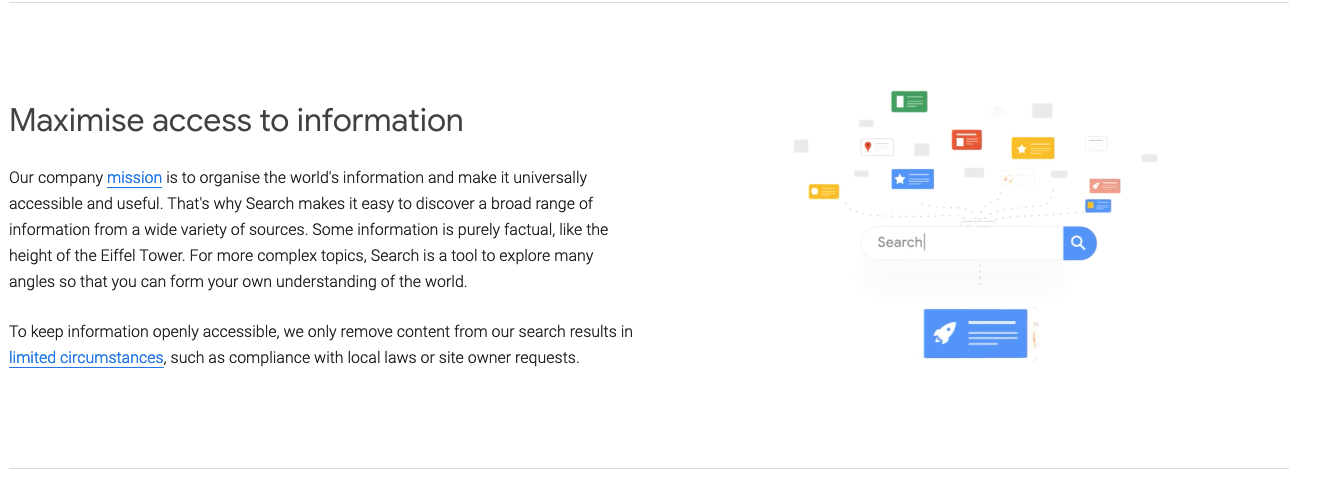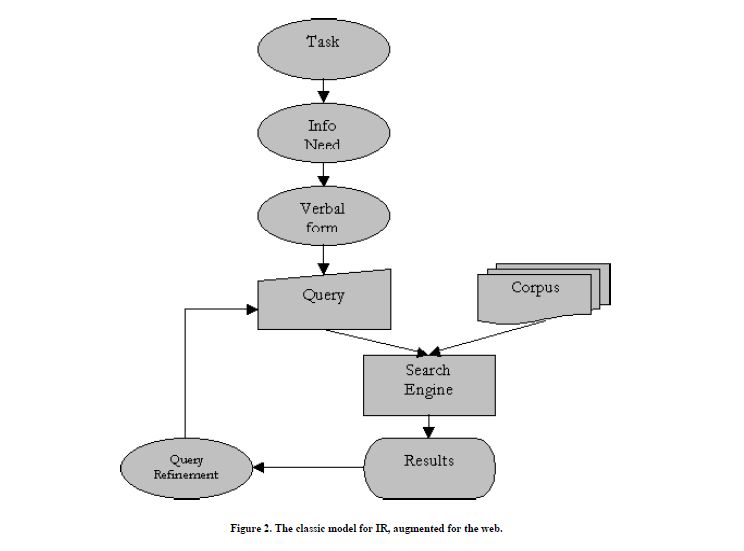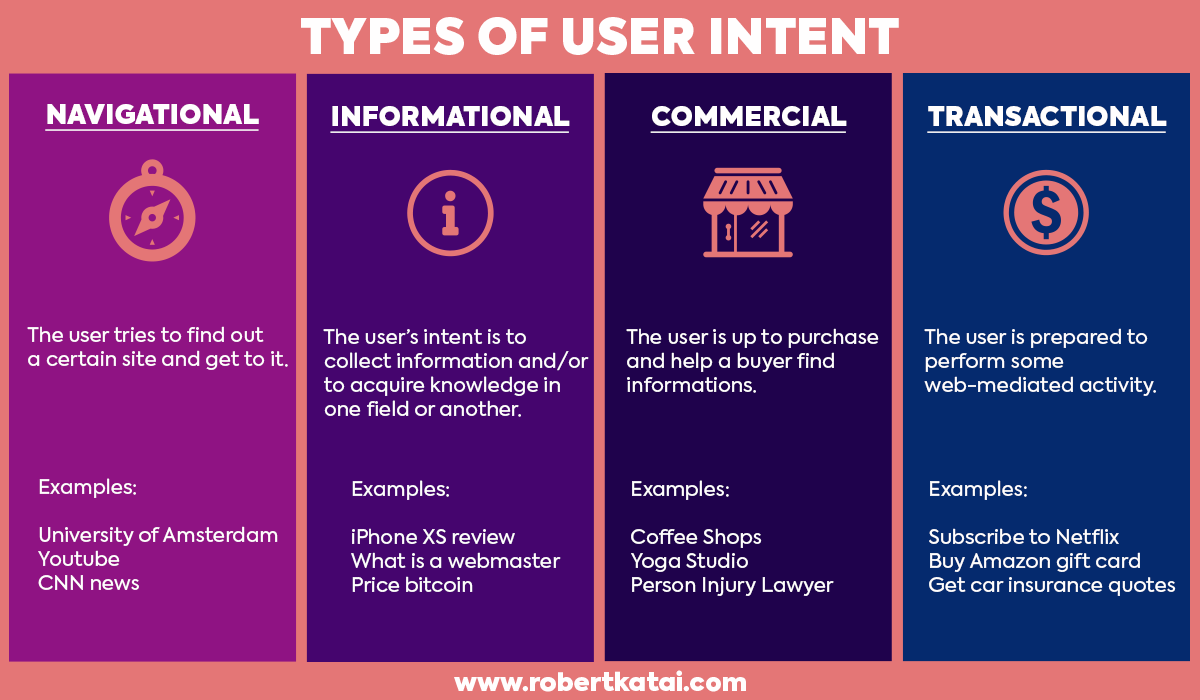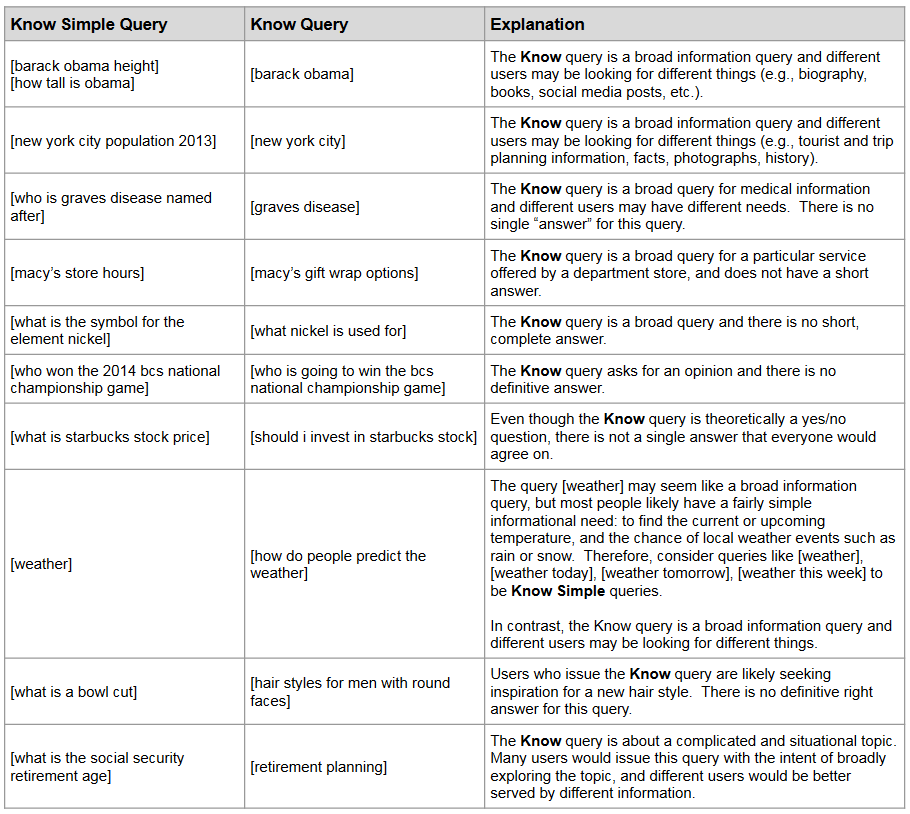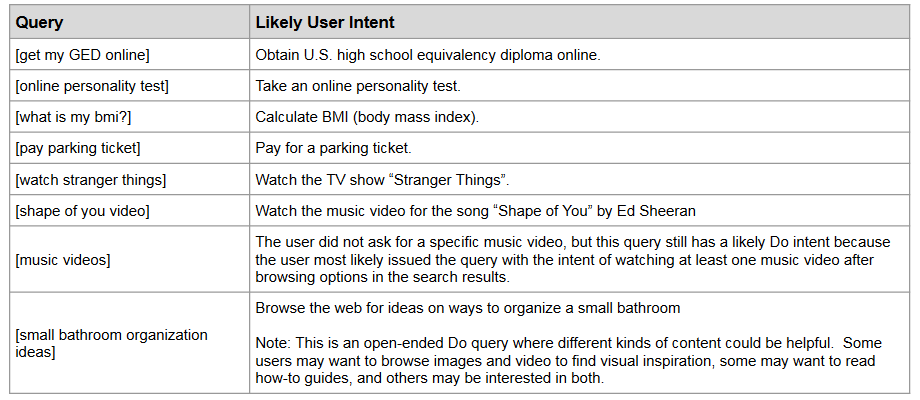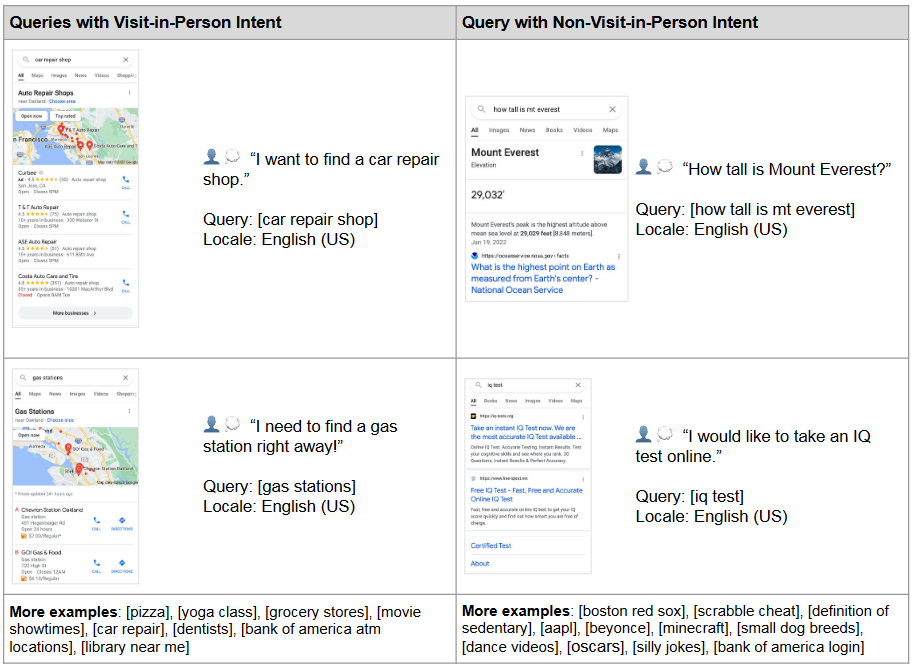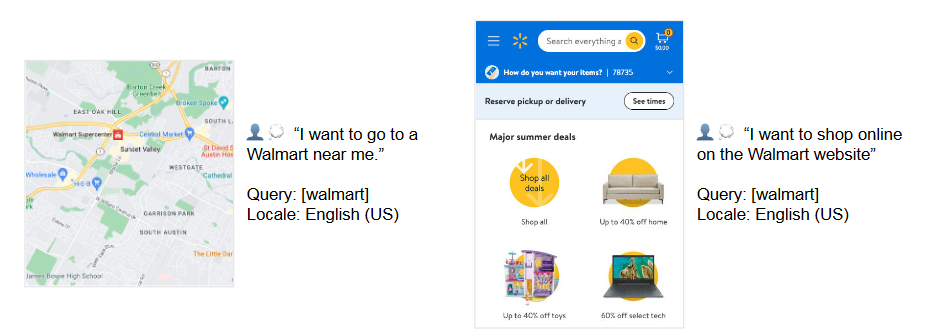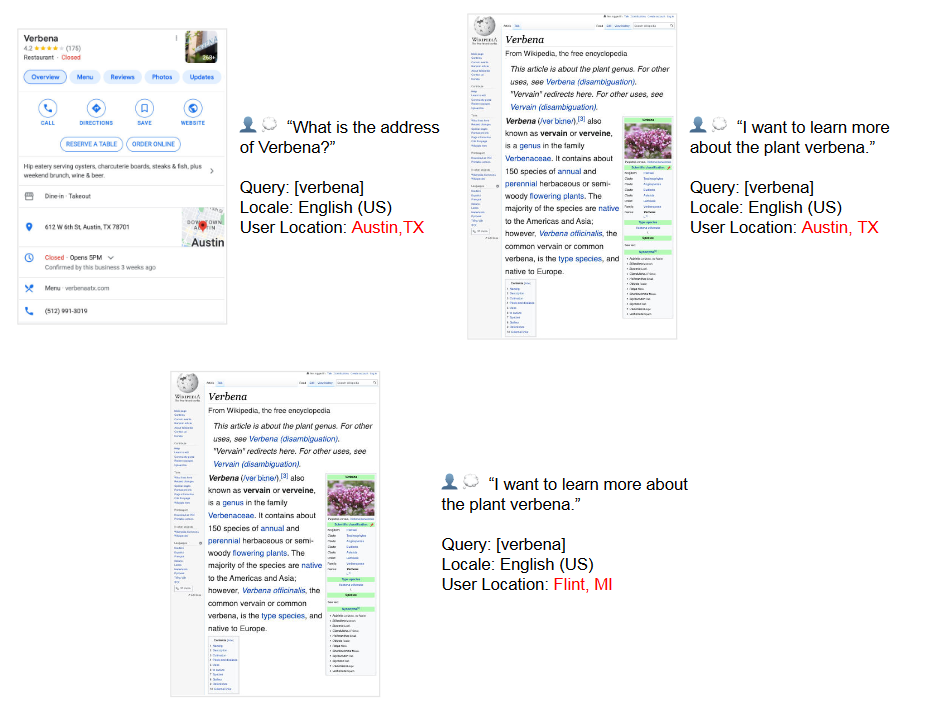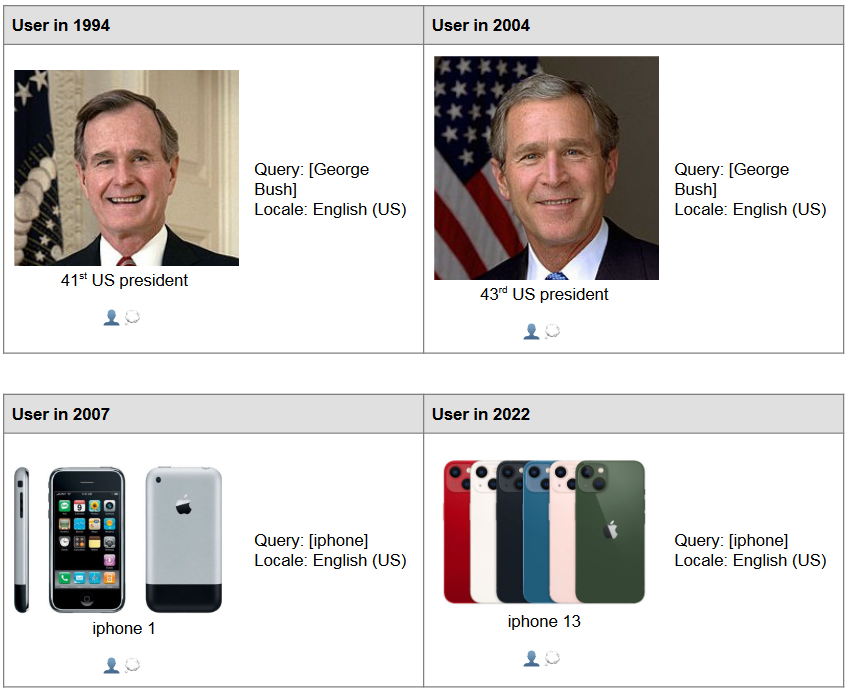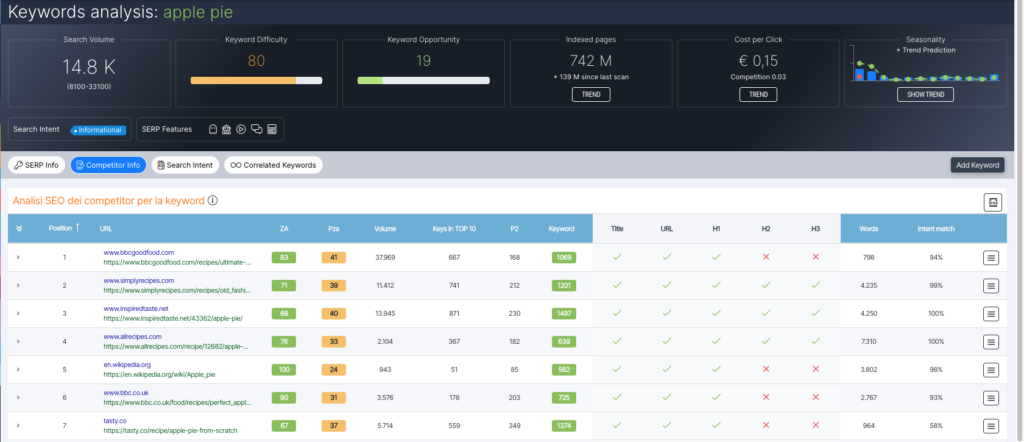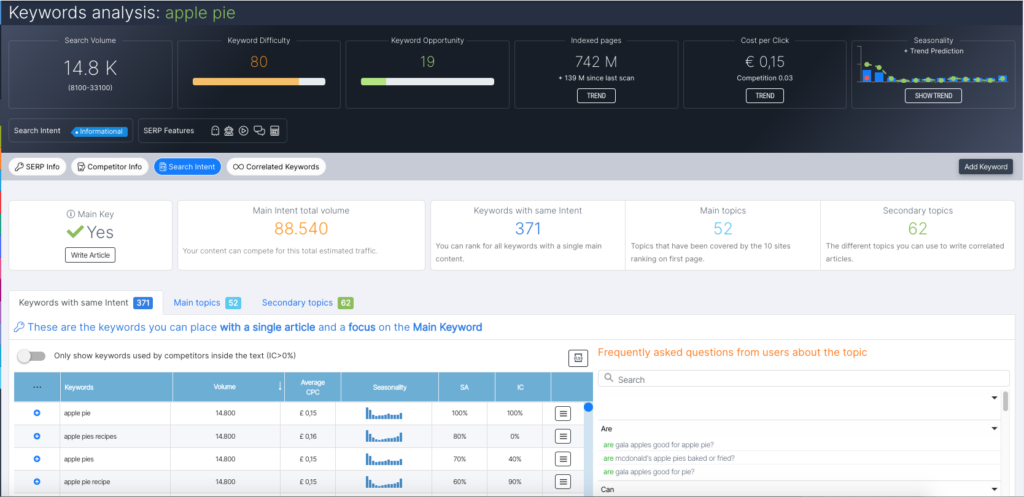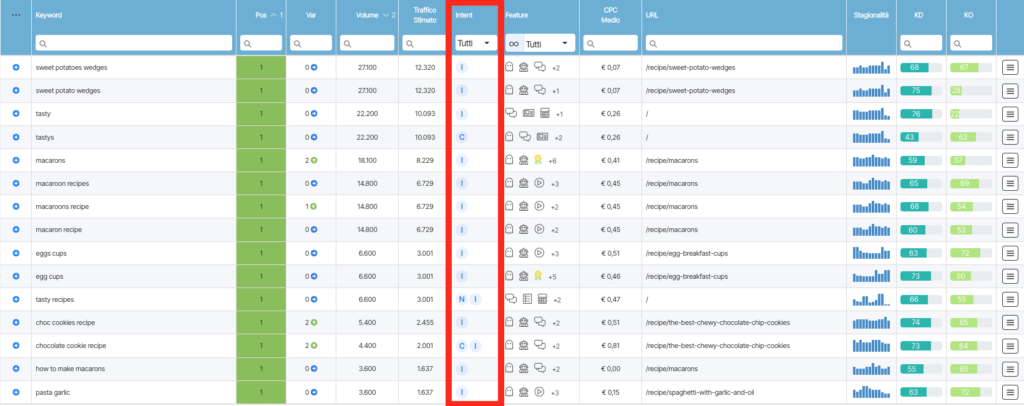Understanding the search intent to improve your ranking
Talking about SEO we can often hear the expression search intent, one of the fundamental keys to engage users and please search engines, but for almost 20 years now (since the expression was coined the first time) we usually just mention the categories Informational, Transactional, Navigational or Commercial. Yet, the concept cannot be reduced to this simple classification, which offers no practical and useful information to those who want to know how to create a content that has real opportunities to rank, and only by understanding the true meaning of search intent and learning to build content around what users really need can we actually improve the ranking of our pages on Google.
What is the search intent
With the expression search intent we refer to what is behind every search on Google or on any other search engine.
When using a search engine, in fact, people have something specific in mind – answers to their problems, information on the services available, offers or reviews on the product they are interested in and so on – and search intent, also called user intent or audience intent, is just the explanation of why a user ran an online search using that query.
In other words, it is the primary requirement that drove a person to use Google and do a search, it is like a spark, the starting point of the search experience and the search journey, and it also encloses what the person expects to find among results pages. So basically, the search intent gives us an idea of the “why” behind a search query – because our audience needs it, because it’s valuable and because someone is looking for it, but also because we have to build that content (in that way).
SEO search Intent, a fundamental analysis
We can say, by simplifying, that all online searches are aimed at satisfying a real need, which can be linked to the need to find information on current events or on a specific topic, request services, buy products, or simply view a specific website.
Understanding and intercepting the need that drives the action and the interest of online people is essential to be able to present valid content, and in fact the study of the intent of users has become a crucial must for the SEO and positioning, And it’s easy to see why.
Search engines, and in particular Google, are the protagonists and the main tool to intercept users who are interested in specific services and products when they really need them: In summary, search engines rank and prioritize online content according to various ranking criteria, including the ability to understand the intention of users and respond to that need. In practice, therefore, even search engines working to better understand what users are actually looking for, which is then transformed into pages with search results that meet the primary intent.
It is also in their interest, then, to bring out in their SERP pages that are able to present effective, valid and useful content for people, and therefore content that intercepts the search intent, the basic reason that moves the user’s action on the Web.
We also read it in various documents and on the official website of Google, where stands out the phrase that the mission was, and still is, to “organise the world’s information and make it universally accessible and useful”. In short, Google’s entire raison d’être is to provide users with the most relevant search results for their query: it is obviously not a “altruistic” philosophy, but awareness (based on years of analysis and studies) that users are more satisfied when the content shown in SERP not only simply matches the keyword string inserted, but intercepts the intention of their search.
The history of search intent
The term search intent was coined in 2002 by Andrei Broder, employee of Altavista (and therefore of a search engine at the time competitive to Google!) who first realized that behind every search there was a “need” (as you can see in the following diagram).
Initially, it identified three typologies: informational searches, transactional searches and navigational searches, to which over time has been added the category of commercial searches.
Over time, in fact, the user experience has become the single most important attribute for the evolution of search engines and we can say that almost every change to the engine has been designed to make life easier for people, providing better results, more efficiently (as with the Page Experience) and minimizing the effect of spam advertising tactics.
What are the types of search intent
In summary, search intent is the reason and the goal because of which a user has performed an online search and can respond to different needs. For simplicity, however, in the head of digital marketing and SEO the intent search users are made to fall into some macrocategories of queries, ie navigational, informal, transactional and the last that we could define for commercial purposes.
- Informational searches
The user is documenting a generic or specific topic and is interested in information on a particular topic, generally to achieve the ultimate goal of expanding their knowledge. These can be simple, straightforward issues like “who is the president of the United States?” or “how much is 2+2” (questions that have a precise and correct answer, provided by Google through a short explanation or a short list of items) or something that requires a longer and deeper answer as “how does the blockchain work?” and are not always formulated as questions.
- Navigational searches
These are searches made by a user who searches for information in a specific context or on a particular site, who already knows the name of a product or brand; usually, they offer as a result the official pages of the reference websites, because according to the search engines the user already has in mind the site on which he intends to navigate and therefore their task is simply to accompany them, obviously providing additional alternatives. Examples are the “Facebook” or “Twitter login” queries and, in general, the branded keywords.
- Transactional searches
They have as their purpose a concrete action on the part of the user, which can be both the acquisition of a product or a service (free or paid), a download of software, registration to a newsletter or other. The user who performs this search is ready for the action and transaction (not only of an economic nature), is ready to do, as in the case of “buy macbook pro”, “samsung galaxy cheap”, “dazn price” or “download winrar”.
- Commercial searches
They are searches to investigate on a commercial level: the intent of the user is to collect data and information before making a purchase choice, make an in-depth study on the characteristics of services and products for future purchases because it has not yet made a final decision on which solution is right for him. Examples of these queries include “best 4K Tvs”, “best iphone or samsung galaxy”, “SEOZoom reviews” and “best restaurant in Rome”.
The latter example allows us to also deal with so-called “local searches“, those in which, the user is looking for a resource that is geographically close to his current location (or a declared location): in reality, however, the analysis of these researches reveals a wider commercial intent and therefore can be superimposed on commercial research – this is the case of “plumbers near me”, “cheap hotel nearby” or indeed of “best restaurant in Rome” mentioned before.
User intent and Google: what the quality raters guidelines tell us
Also proving to us that these concepts are relevant and how much search intent matters to Google are the Search Quality raters guidelines (last updated at the end of November 2023), which devote an entire paragraph to understanding user intent, with a special focus on those using mobile devices.
This document, which serves as a compass for the work of quality raters but provides very useful guidance to all those trying to stand out on Google, encapsulates query types into 4 categories, specifying that there can also be “overlap”
- Know Query – knowledge/information queries, some of which are called Know Simple.
- Do Query – action queries, when the user is trying to achieve a goal or engage in an activity.
- Website Query – website query, when the user is looking for a specific website or web page.
- Visit-In-Person Query – queries for in-person visits, some of which are directed to search for a specific business or organization, while others search for a category of business.
Going deeper, Google describes the main user intent queries in this way:
- Know and Know Simple Query
The intent of a knowledge search is to find information or explore a topic. Users want to learn more about something.
Know Simple (basic, simple knowledge) queries are a special type of this type and aim for a very specific answer, such as a fact, a diagram, and so on. The answer must be correct and complete and can be displayed in a relatively small space. As a general rule, the query can be classified as a Know Simple if there is a general consensus on an exact answer that can be expressed in 1-2 sentences or a short list.
Simple Know Simple queries can be phrased in the form of a question such as [how tall is barack obama], but they often do not contain interrogative words: for example, [height barack obama] has the same user intent as [how tall is barack obama] despite not being in interrogative format.
In any case, most queries are not Know Simple, such as:
- Wide, complex, and/or in-depth informational searches that do not have a short answer.
- Ambiguous or unclear informational searches.
- Informational searches on controversial topics.
- Informational searches without a definitive “right answer.”
- Searches in which different users may be looking for varieties of information or different information sources.
- Searches in which users want to browse or explore a topic.
- Searches in which users want to find inspiration or ideas related to a topic.
- Searches in which users seek personal opinions and perspectives from real people.
In the screen below we find some examples where the Know Simple query requires a simple fact, which can be answered correctly and completely in a small space, while the answer to the Know query is more complex.
- Do Query
The intent of a Do query is to achieve a goal or engage in an activity. The goal or activity may be downloading, purchasing, obtaining, being entertained by, or interacting with a website or app. Action searches may require immediate fulfillment or may be more indefinite, involving browsing and subsequent searches to finally reach the goal.
Google urges that the line between Do Queries and Know Queries is sometimes blurred, and there may be searches that fit into both categories: therefore, it is not possible (nor useful) to differentiate strictly between these two categories, which serve to illustrate some general patterns in users’ intent, and there are many searches that do not fit neatly into just one of these categories.
These are the examples proposed by the paper:
- Website Query
The intent of a Web site search is to locate a specific Web site or Web page that users have requested; this single Web page is referred to as the target of the search.
A variation of this type is the URL Query, which can be found in the form of:
- Exact, perfectly formed and functioning URLs, such as [http://www.ibm.com], [www.ibm.com] or [ibm.com].
- Imperfect URL Queries: queries that look like URLs, but are not “working URLs.” In other words, these addresses do not open when typed or pasted into the browser address bar, but they still hint that users have a specific page in mind as a destination.
Here are some examples.
- Visit-in-person Query and User Position
People use search engines to look for information for in-person visits, such as finding cafes, gas stations, ATMs, restaurants, or anything else in their vicinity.
Some queries explicitly refer to nearby information or results (e.g., businesses, organizations, other nearby places), while others (which although seemingly “look like” the former) have other kinds of intent and do not ask for nearby information or results, as in the cases presented below.
And then there are queries that need to be “interpreted,” because they could have one intent or the other, depending on the type of user and their location. For example, the guide cites [hotels] [post office] [h&m] [library] [bank of america] [the gap] among searches with both in-person and nonvisit intent.
As mentioned, sometimes it is the user’s location that can change the understanding of the search. For users near Austin, Texas, the search [verbena] could have two different interpretations: a popular restaurant called Verbena or the verbena plant. In most cases and users located elsewhere, there is no restaurant (or anything else) called Verbena and there is only one interpretation of the [verbena] search: the plant. The Austin restaurant is not well known outside of Austin, TX.
- Query with multiple intents
Lastly, many searches present more than just one likely user intent. For example, the query [harvard] is highly influenced by the user’s location and need, as it may refer to the university’s official homepage (Website query), a request for directions to the campus (Visit-in-person query), or information about the college such as the enrollment process or history, about recent news or updates on sporting events (Know query).
Analysis of what moves the online user
In the field of linguistics there are intensions and extensions of words and phrases: the first term refers to the semantic meaning of the expression, while the extensions are the objects to which this phrase can be attributed, the sense that expression possesses. Taking an example provided by Search Engine Land, the term “sock” has an intention that denotes the garment we wear on the feet; the extension, however, could serve to specify more features and categories of socks, based on gender, type, to color and so on.
Even search engines must reason in these terms to categorize and provide the correct results on a particular search, operation that requires huge amount of data; to produce Serps, then, search engines classify the results in different ways, including “the application of sentiment analysis to content on the Web, the extraction of data from the PLA (Product Listing Ad) platform and even the revision of what competitors use as advertising text for the offer of Google ads”as Kristopher Jones still writes.
This work is now entrusted by Google, but also by Bing, to increasingly advanced systems in the field of deep learning and natural language processing, such as the language model BERT launched by Google in late 2019 or the algorithm MUM started in 2021.
Thanks to them, search engines are refining their ability to interpret user queries and respond by presenting the most relevant search results, namely pages that have the content that give the right information to the right user, and this means that before creating any content it is important to know and understand what is the real intent behind the specific query that affects our business, or we risk posting pages online that do nt get the results we are hoping for and writing articles that don not fit.
The SEO importance of detecting the search intent
The three classic types of research can be reduced to three verbs that guide people’s exploratory interest: Know, interest that groups informational searches; Do, which instead binds transactional queries; Go, for navigational searches. Being able to understand and use these references in keyword research can help write more effective content, because understanding what it wants and what it needs for its target audience and potential customers means becoming able to plan our strategy in advance and choose keywords that can increase the chances that people will find the site while searching online. Much, however, also depends on the type of keyword and query on which we compete.
The interpretation of queries according to Google
In fact, each of these research intentions can be associated with different journey experiences, with well-distinct keyword and often with completely different SERPs: Those who want to make a purchase will probably also want to know the price and technical characteristics of that particular product, while those who are looking for information on its use are interested in other news.
In the case of very ambiguous keywords (that is, with more possibilities of interpretation), Google generally responds with a mixed SERP, offering as a reference sites that respond to different purposes, to please each type of user. The wider and more vague the search, the wider the answers that Google tries to provide to make the person’s experience positive.
This also means that, in the case of sites that point to direct conversions, the more difficult it is to attract customers and convince them to “do”: there is a need for a very effective work on content, call-to-actions and the overall validity of the page to be able to transform the click into something different.
When the search is more specific, precise and refined at the start, the first obstacle has already been overcome, because the user already has clearer ideas and looks for confirmations, and therefore the content can be built already with a sharper direction, trying to anticipate the kind of questions, doubts or demands that the public has to face in order to offer immediate solutions. Obviously there are also different Serps generated by Google for these queries, because they become more specific, with results that concern the same topic (and no longer generic or mixed).
In terms of SEO (and page returns), it is difficult – sometimes impossible – to succeed in positioning the sale page of a product in a SERP that Google has identified and marked as informational, just as it is on the contrary a “how to” guide page will fail to emerge in a batch of purely transactional results.
There is more: even if we succeed in this operation, this objective risks being useless or counterproductive for our site: if people are interested in buying (if the search intent glimpsed by Google is transactional and the Serps are unique, with only such results), they are at a point in the funnel where they do not want to read additional information and – even if they click – they will immediately go back to find more appropriate answers. Likewise, if they want to read more they will not be interested in buying, and so the page will not bring conversions and will only increase its bounce rate.
The revolution of the funnel
Compared to this last point, in particular, Google goes so far as to say that the intent is redefining the marketing funnel, emphasizing that people no longer follow the old linear path that goes from awareness to consideration to purchase.
Today in fact there is what is called messy middle, the chaotic center of the process that concerns all those stages of the purchase path, very confused, that take place between the first trigger and the actual purchase, in which the attention of people “expands and contracts in unique and unpredictable moments”, which generate obvious and significant impacts on marketing and conversions (even in funnel points where they were not expected).
Understanding SEO contexts and focus
It is for these reasons that the 4 (or 5) classic types of search intent no longer make sense today, but need to take a different approach to keyword research for editorial planning and site growth, no longer simply focused on searching for high-volume keywords, but on finding the best context.
That is, we must learn to analyze the entire search process of users – from the moment when the need is “born” to the point where they find the solution – and then deepen what Google has already considered relevant and shown in SERP: this will be the focus already chosen by the search engine, which we must stick to if we want to publish effective and competitive content.
It is no longer enough to simply know whether the intent is Informational, Transactional, Commercial or Navigational, because this is just a static photograph of a reality in motion. What we need is to know what we have to offer to users who have needs and do it the right way, trying to understand what Google has learned from the many requests made to it every day.
A scenario that is constantly evolving
Moreover, everything has to be done in real time, also because Query Meanings Can Change Over Time and the context in which we want to compete moves at high speeds, as we also discovered in the case of the orange sky and Google’s immediate answers.
This speed is evident in SERPs linked to commercial intent, which can be revolutionized by technological advances – we think of the best smartphone, the best TV, or even niche products.
But it also applies to informational intent: searches related to institutional figures such as President of the Italian Republic, ministers or mayors, but also those in other areas change and evolve over time and-even a few months apart-can lead to completely different results, because Google follows the “trend” and changes the priority search intent accordingly.
It is no coincidence that in the aforementioned guidelines for quality raters there is a paragraph dedicated to this issue (entitled precisely Query Meanings Can Change Over Time), which spurs us to think about search and its current meaning during the course of the evaluation – and this also applies to our keyword analysis from a strategic perspective. We must always assume that users are looking for up-to-date information on a topic, that they are interested in the latest model of a product, the latest edition of a recurring event, and so on, unless the search indicates otherwise (e.g., by explicitly adding the year of reference).
Trivially, the interpretation of the [iphone] search has changed over time with the release of new iPhone models: the first apple phone was introduced in 2007, and users searching [iphone] at that time were interested in what was (at the time) the first and new iPhone model. Today, most users are looking for the latest iPhone model or news about the upcoming one, and it is easy to assume that new models will be released in the future and the dominant interpretation will change again.
SEO and Search Intent: SEOZoom tools to optimize content
What we have said is necessary to understand a fundamental concept: we must consciously design our contents so that they resonate with the intent of research. Understand what search users are looking for and why they will help us to meet them exactly where they are with what they need and in the most useful format. In this way we succeed in achieving a fundamental objective for our site: that is, we will have not only organic traffic, but quality traffic, users already targeted and interested in what we can offer at that precise moment.
This applies to all topics, so the intent must be elaborated absolutely in real time and for this reason the new suite of Seozoom has an algorithm able to capture the intentions of search of the users at the precise moment in which this information is needed, in real time, with all the information needed to create adequate content.
SEOZoom’s new search intent algorithm does not simply analyze the SERP of that keyword, but first try to locate all the clusters of keyword and URLs that are in strong relation: thus, it is able to extract the topics covered in web pages (Topic) and, for each competitor, shows us how many times, how and in which tag all the keywords that identify the topic have been used.
The analysis of all this information leads us to the definition of a precise model of what should be a document able to satisfy the search intent of users and, at the same time, Google’s algorithms.
This brand new engine maniacally tracks the search intentions of users in all sections of the Suite and is used whenever it is necessary to have information on keyword and web pages that we are analyzing, allowing us to understand the search intent by overcoming the simple and static categories.
In practice, therefore, Seozoom 2.0 is not limited to report the search intent “user side” (that is, if the search intent of the keyword analyzed is commercial, informational, navigational or transactional), but also shows that “understood” by Google, immediately indicating the topics and keywords for which we can position ourselves making a content and providing reliable insights always updated per second.
Identifying the intention only by keyword can in fact be limiting, and SEOZoom 2.0 decided to “read the clues” that Google provides in search results, giving a score to each item found and providing an identikit of intent in various tools, to be used to make planning during keyword research, to organize keyword clusters and assign them to copywriters and, in short, to better manage all the work behind the creation of content.
Knowing whether a keyword is informational or transactional remains a pure discernment utility, while the real added value lies in using all this information, together with those of the other tools such as “Keyword Search Intent”, “URL Intent”, “Editorial Assistant”, to create a proper search intent model based on competitors and what is really working on Google, that is, on what Google has identified as relevant to the query and which we must stick to to hope to make our pages rank.


